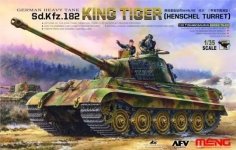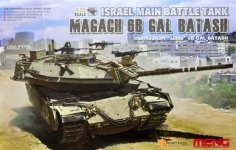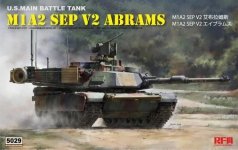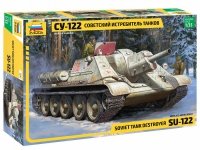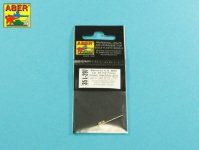AFV Club AF35328 British MBT Centurion MK.5/1-4.RTR Berlin Infantry Brigade (BAOR) 1/35
Plastikowy model do sklejania. Nie zawiera kleju ani farby.
Centurion był głównym czołgiem bojowym armii brytyjskiej okresu po II wojnie światowej. Wprowadzony w 1945 roku, jest powszechnie uważany za jeden z najbardziej udanych powojennych projektów czołgów,[4][5][6][7][8][9] pozostający w produkcji do lat 60. linie frontu do lat 80-tych. Podwozie zostało również przystosowane do kilku innych ról, które pozostają w służbie do dziś. Był to bardzo popularny czołg z dobrym pancerzem, zwrotnością i działem.
Rozwój Centuriona rozpoczął się w 1943 roku, a produkcja rozpoczęła się w styczniu 1945 roku. Sześć prototypów przybyło do Belgii niecały miesiąc po zakończeniu wojny w Europie w maju 1945 roku.[10] Po raz pierwszy wszedł do walki z armią brytyjską w wojnie koreańskiej w 1950 roku, wspierając siły ONZ. Centurion służył później w wojnie indyjsko-pakistańskiej w 1965 roku, gdzie walczył z dostarczonymi przez USA czołgami M47 i M48 Patton oraz służył w Królewskim Australijskim Korpusie Pancernym w Wietnamie.
Armia izraelska używała Centurionów w wojnie sześciodniowej w 1967 r., wojnie Jom Kippur w 1973 r. oraz podczas konfliktu w południowym Libanie w 1978 r. i wojny libańskiej w 1982 r. Centurionów przerobionych na transportery opancerzone używano w Gazie, na Zachodnim Brzegu i na granicy libańskiej. Królewskie Jordańskie Siły Lądowe użyły Centurionów, najpierw w 1970 roku, aby odeprzeć najazd Syrii w jej granice podczas wydarzeń Czarnego Września, a później na Wzgórzach Golan w 1973 roku. Republika Południowej Afryki rozmieściła swoich Centurionów w Angoli podczas południowoafrykańskiej wojny granicznej. ]
Centurion stał się jednym z najczęściej używanych konstrukcji czołgów, wyposażając dziesiątki armii na całym świecie, a niektóre z nich nadal służą do lat 90. [12]. Jeszcze w 2006 roku podczas konfliktu izraelsko-libańskiego Siły Obronne Izraela wykorzystywały mocno zmodyfikowane Centuriony jako transportery opancerzone i pojazdy inżynierii bojowej.
Południowoafrykańskie Siły Obrony Narodowej wciąż zatrudniają ponad 200 Centurionów, które zostały zmodernizowane w latach 80. i 2000. jako Olifant (słoń).
W latach 1946-1962 wyprodukowano 4423 Centuriony[13], składające się z 13 podstawowych znaków i licznych wariantów. W armii brytyjskiej został zastąpiony przez Chieftaina.
The Centurion was the primary British Army main battle tank of the post-World War II period. Introduced in 1945, it is widely considered to be one of the most successful post-war tank designs,[4][5][6][7][8][9] remaining in production into the 1960s, and seeing combat in the front lines into the 1980s. The chassis was also adapted for several other roles, and these have remained in service to this day. It was a very popular tank with good armour, maneuverability, and gun.
Development of the Centurion began in 1943 with manufacture beginning in January 1945. Six prototypes arrived in Belgium less than a month after the war in Europe ended in May 1945.[10] It first entered combat with the British Army in the Korean War in 1950, in support of the UN forces. The Centurion later served in the Indo-Pakistani War of 1965, where it fought against US-supplied M47 and M48 Patton tanks and it served with the Royal Australian Armoured Corps in Vietnam.
Israel's army used Centurions in the 1967 Six-Day War, 1973 Yom Kippur War, and during 1978 South Lebanon conflict and 1982 Lebanon War. Centurions modified as armoured personnel carriers were used in Gaza, the West Bank and on the Lebanese border. The Royal Jordanian Land Force used Centurions, first in 1970 to fend off a Syrian incursion within its borders during the Black September events and later in the Golan Heights in 1973. South Africa deployed its Centurions in Angola during the South African Border War.[11]
The Centurion became one of the most widely used tank designs, equipping dozens of armies around the world, with some still in service until the 1990s.[12] As recently as the 2006 Israel–Lebanon conflict the Israel Defense Forces employed heavily modified Centurions as armoured personnel carriers and combat engineering vehicles.
The South African National Defence Force still employs over 200 Centurions, which were modernised in the 1980s and 2000s as the Olifant (elephant).
Between 1946 and 1962, 4,423 Centurions were produced,[13] consisting of 13 basic marks and numerous variants. In British Army use it was replaced by the Chieftain.









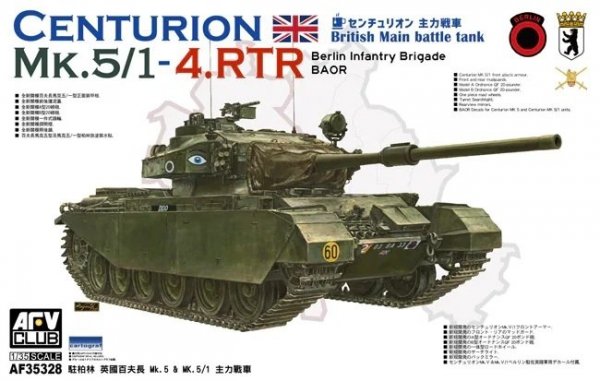
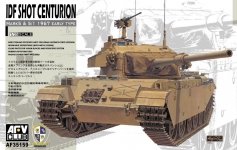
 6 szt.
6 szt.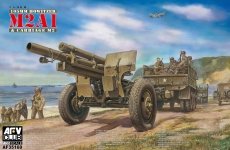
 3 szt.
3 szt.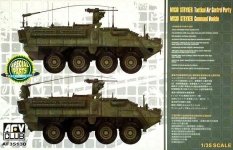
 1 szt.
1 szt.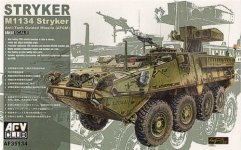
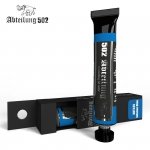
 4 szt.
4 szt.
